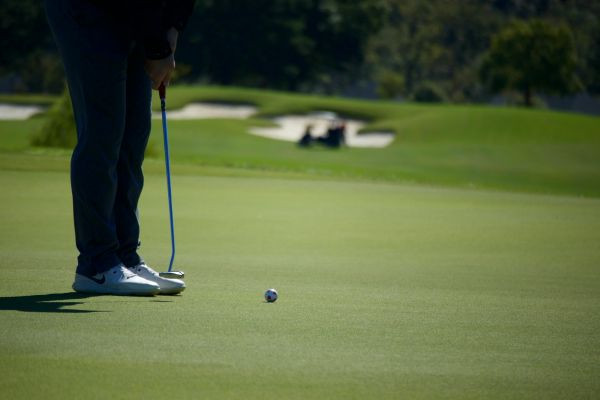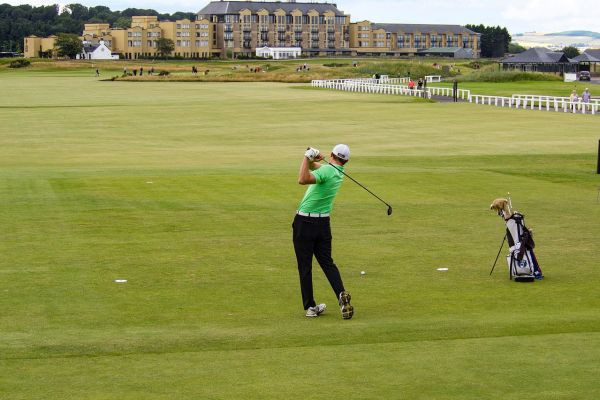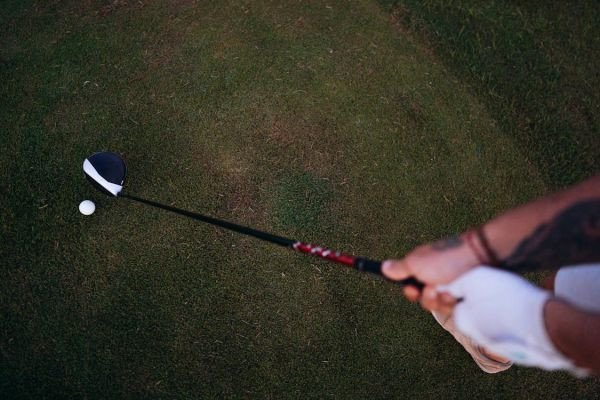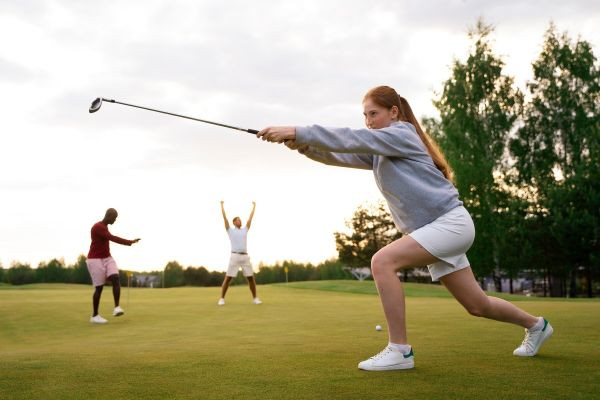Developing a Flawless Downswing: The Revolutionary Tennis Racket Trick
Many golfers struggle with the misery of a mediocre swing. You've learned the basics, but your shots simply do not pan out the way you want. So, how do you break beyond this deadlock?

Many golfers struggle with the misery of a mediocre swing. You've learned the basics, but your shots simply do not pan out the way you want. So, how do you break beyond this deadlock?
Continuous sessions of practicing swings and tweaking techniques in your club may lead to slight improvements at first. However, experts recommend an unconventional drill that helps you master your swing, and it doesn't even use a golf club.
Discover how this hidden technique can refine your swings from painfully blunt to perfectly balanced!
The Basic Elements of Your Golf Swing
Mechanics of the Downswing
The downswing is a critical element in perfecting your swing. It guides and leads the power generated during the backswing and ensures steady follow-through during contact.
The upswing’s potential energy and the control exerted on the downswing determine the quality and outcome of your swing.
What Prevents That Elusive Pure Contact?
Too much power and not enough control can destroy the quality of your swing.
Improper movement of the wrists exerts unnecessary force on one side or uneven contact with the ball. Slicing happens when your club face makes contact in the wrong orientation. This disoriented contact sends the ball veering too much in one direction.
Haphazard swings also appear from incorrect posture and body alignment.
Enter: The Tennis Racket Trick
Concept and Background
A tennis racket allows you to imitate the swinging motion of a golf stroke but without the unwieldy length of a real golf club. Experts discovered that this simple mechanic can transform into a handy drill that translates into better golf swings.
How It Works
Swinging a tennis racket allows you to trace the movements involved during a backswing, downswing, and follow-through. The racket’s face features a broader and wider surface. So, you feel a more pronounced tactile feedback when swinging it down.
You can easily “feel” the feedback generated during the downswing. This instant feedback allows a steadier wrist position and a smoother swing path. The sways and movements in the racket also become more obvious as it descends on the downswing.
So, you can track the dangers of tiny rolls and shakes on the racket face when bringing it down on the ball.
Extended practice with such cues and feedback leads to a more refined swing when transitioning to a golf club.
The Correct Way to Perform the Tennis Racket Drill (Step-by-Step Tutorial)
Requirements
Grab an existing tennis racket or buy a cheap one from the store. Any basic tennis racket will serve the purpose.
Find an area at home where you can swing without hitting things nearby. Experts have performed this drill in their backyards, courtyards, garages, etc.
Step 1: Assume the Correct Stance
Bend both your knees slightly and stand with your feet about shoulder-width apart (basically the same stance you take for your normal golf swing). Ensure that your weight falls evenly on both feet.
Step 2: The Grip
Place your hands on the tennis racket handles with the exact grip you use for golf clubs. This consistent grip will ensure that your familiarity with the swing transfers easily to your golf game.
Step 3: Execute the Swing
Begin your swing with moderate speed to ensure control and a smooth backswing. Then, start the downswing by following a smooth path as you allow your wrists to maintain the correct position and speed.
Pay close attention to the way the racket sways or wobbles. Correcting these shakes will let you execute a consistent swing with a clubface later.
Step 4: Rinse and Repeat
Repeat the motion several times and try to speed the swing closer to your normal golf swing. You'll have to imagine the ball in front of you and swing through the non-existent point of impact.
How the Tennis Racket’s Shallow Arc Helps Your Swing
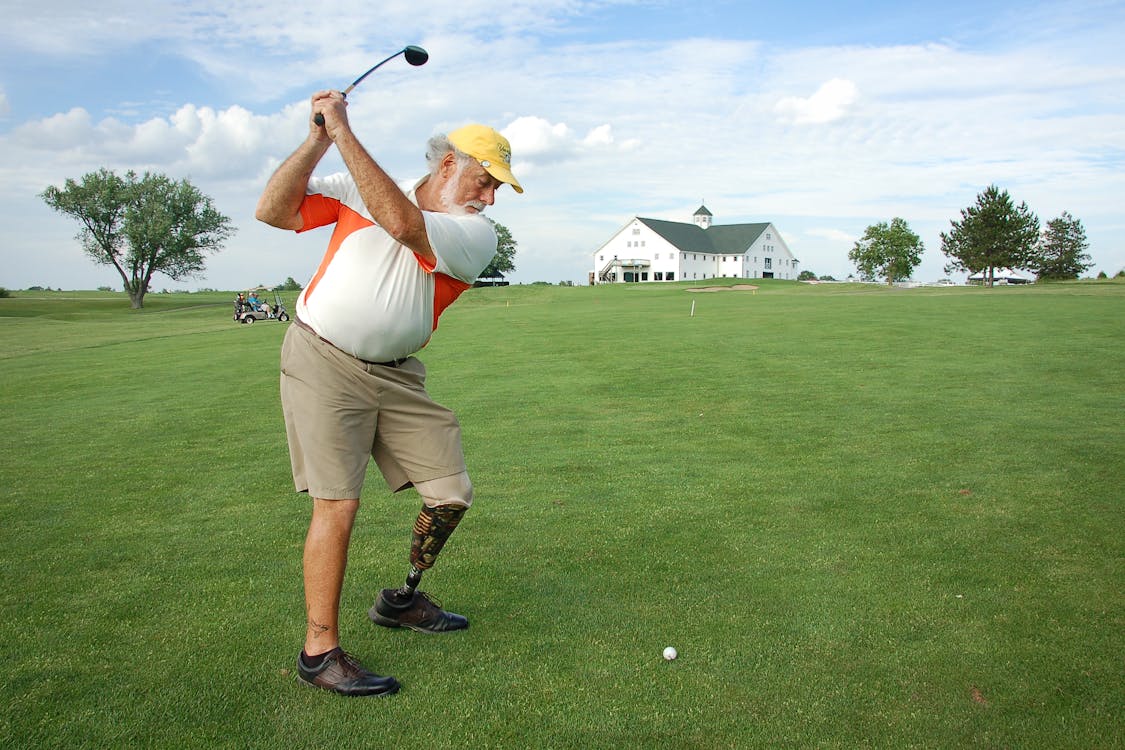
Photo by Andrew McMurtrie
Technical Breakdown
Your golf club’s longer length prevents close inspection of the clubface when it approaches the impact point. However, a tennis racket creates a short and shallow swing. So, the imaginary point of contact is closer to you than a real golf club.
Also, the racket’s wider face responds more sensitively to deviations in your wrist or position. So, any inconsistency in the swing gets detected easily if you’re paying attention.
The more apparent in-to-out motion this shorter swing creates lets you control the club's path and maintain proper balance.
Practical Advantages of Your Swing
- You reduce the risk of slicing by maintaining an in-to-out clubface motion consistently.
- The shorter tennis racket (compared to your golf club) also encourages a faster and more powerful swing.
- The racket's wider face and friction with the air on the downswing lets you develop more accurate handling and balance of the clubface.
- Familiarity with a shorter racket swing translates into a more robust golf swing, leading to higher ball flight for those long fairway shots.
Addressing Common Mistakes
Avoiding the Slice
Improper grip and balancing of your golf club leads to slicing, as the club face meets the ball at an awkward angle. The resulting sidespin causes the ball to spin excessively on one side.
Pay attention to your downswing during the racket drills. Ensure that your racket follows an in-to-out motion while approaching contact with the ball. The racket's wider frame lets you see and visually trace the in-to-out movement even as you execute the action.
Keep your wrists in position firmly and ensure uniform rotation.
Preventing Unwanted Hooks
Premature closure of your clubface during the swing leads to uncontrolled hooks. Right-handed players will see excessive ball curving towards the left (and vice-versa for lefties).
Practice extra care in maintaining a consistent grip on the handle. The racket's shallow grip will let you observe if the racket's face is closing in too early before contact with the ball. Correcting this premature closing will also allow you to maintain a more balanced clubface on your golf club.
Strategies to Enhance Your Drills
Wrist Exercise
Curl your wrists gently and stretch the joints in your hands before performing the racket drill. A flexible wrist ensures better balance and direction during the racket swing.
Forward Lean
When practicing the racket drills, hold the racket’s shaft forward as it makes imaginary contact with the ball. This forward-leaning action will allow the clubface to hit the ball at an even angle and draw the optimum compression during contact.
Additional Tips on Drills
Consistent Schedule
Regularly making time for these drills is vital. Avoid overdoing the exercises on one day while missing out completely the next day. Focus on spaced repetition instead of long, intensive practice sessions.
Pay attention to the parts of your swing that need further correction. For instance, some players may need to work on preventing the slicing motion, while others may want to improve their balance during the downswing.
Track Your Development
Keep a logbook or a tracking app to monitor your progress. Record improvements in your grip, swing, or power.
Pay special attention to any areas that refuse to improve. What are you doing wrong? Will a better grip help? Perhaps more focus on a steady downswing is the solution. Find ways to refine and tweak your drills in a way that suits your style. Intentionality is key here.
Closing Note
This unconventional tennis racket drill is an innovative and out-of-the-box solution for a common and conventional golfing problem.
Players often hit a plateau in their swing development and find it impossible to reach the next level. This drill will let you break through this proverbial glass ceiling and develop an exquisite swing that will improve your handicap, impress your friends, and elevate your golf game altogether.
FAQs
How long should I perform the tennis racket drill to see improvements?
We recommend a few weeks of consistent drills and practice for the initial phase. However, sticking to a regular routine for a few months will lead to more noticeable and measurable progress.
Can beginners try this drill?
Definitely! The convenience of a shallow swing and the tangible feel of a broad face makes it ideal for first-timers.
Does it work for any golf club?
Yes. Golfers have used the tennis racket drill to refine their swings for drivers, wedges, irons, woods, etc.
How often should I do the tennis racket drill?
Perform the tennis racket drills once every day.
Keep the durations short (10 to 15 minutes). Then, you can start skipping the drill one or two days a week as you progress further.
Beginners may need longer durations and more frequent repetitions to understand how the racket's motions transfer to the golf clubs.
What are some other exercises that work with the tennis racket drill?
Include wrist stretches and curls in your reps (before executing the racket swings). Arm stretches and finger extensions will also help your hands warm up before the drills.
Do conventional golf tutorials include this tennis racket drill?
No. Most traditional golf drills and training techniques require dedicated golfing equipment. For instance, any exercises on your swing will require the relevant golf club.
However, the tennis racket drill has proved to be a more intuitive and easy-to-learn technique that drives faster results and quicker progress in players who perform it regularly and correctly.




























